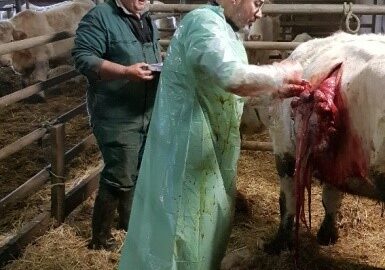Le diagnostic de laboratoire des infections abortives des ruminants

Auteurs
Résumé
En raison des signes cliniques peu spécifiques des avortements chez les bovins et les Petits ruminants, ovins, caprins et de la multiplicité des agents pathogènes en cause, le diagnostic de laboratoire des infections abortives chez les ruminants est souvent une nécessité. Malgré le recours au laboratoire, environ la moitié des causes des avortements restent inexpliquées. Parmi les analyses de laboratoire, si la sérologie garde toujours son intérêt, le diagnostic direct par amplification de l’ADN ou de l’ARN de l’agent pathogène causal par la technique de polymérisation en chaîne (PCR pour l’ADN ou Reverse Transcriptase – (RT)-PCR pour les virus à ARN) a vu son utilisation croître considérablement. Cette prépondérance s’explique par les améliorations apportées à ces techniques moléculaires, mais également par la diminution des coûts des réactifs. Ces techniques performantes ne doivent toutefois pas faire oublier que les résultats nécessitent d’être interprétés à l’aune des signes cliniques et/ou des autres tests diagnostiques.
Abstract
Because of the non-specific clinic signs of abortion in cattle and small ruminants and the multiplicity of the causal pathogenic agents, laboratory diagnosis of infections causing abortion in ruminants is often a necessity. Despite the use of a laboratory, around half the causes of abortion remain unexplained. Amongst the laboratory analyses, serology remains very important. Direct diagnosis by DNA or RNA amplification of the pathological agent by the polymerase chain reaction technique (PCR for DNA or Reverse Transcriptase (RT)-PCR for viral RNA) has increased considerably. The dominance of these techniques is due to improvements in molecular analysis, but also due to the decrease in the cost of the reagents. It should not be forgotten that the effectiveness of the techniques depends on the interpretation of the results together with the clinical signs and/or the results of other diagnostic tests.
D'autres articles
JNGTV 2010 Page 645
Bovins · Aucun thème
Prévalence, facteurs de risque et impacts des maladies utérines post-partum chez les vaches laitières.
Découvrez aussi nos formations
05 janvier 2026
5 jours
Bovin laitier · Bovin viande · Bovins


